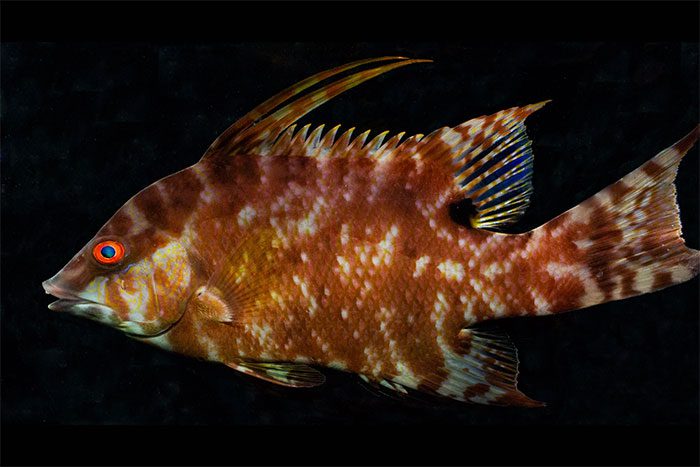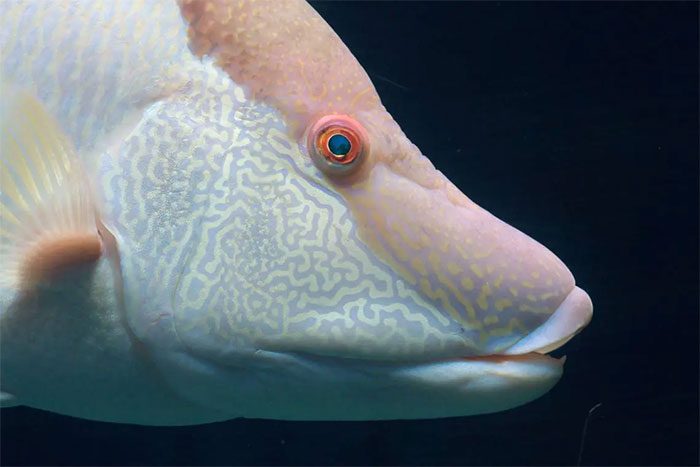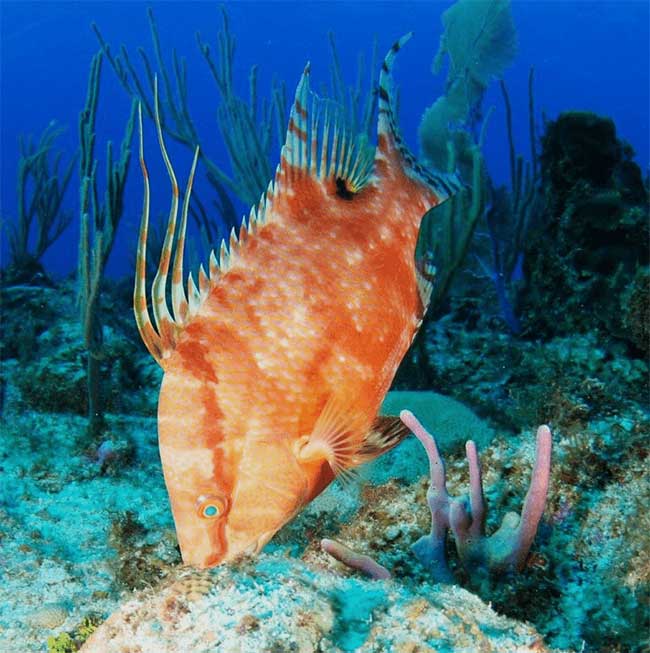A breakthrough in research at UNCW (University of North Carolina, Wilmington, USA) and the Marine Science Center has shown that some species of fish can “see” through their skin by changing color.
The new study reveals that hogfish (Lachnolaimus maximus), living on coral reefs, change their skin color based on their environment, sensing their surroundings using special light-sensitive cells in their skin “even after they are dead.”
The study, published in the journal Nature this week, enhances our understanding of the behavior and evolution of these fish species, as well as how some animals can monitor their own color changes and adapt quickly.

Hogfish, a common fish in the Atlantic Ocean. (Photo: Uncw.edu).
Co-author Lori Schweikert stated: “They seem to be observing their own color changes.”
Sonke Johnsen, another author of the study, explained: “In a way, these animals may know what their skin looks like, even though they cannot ‘bend down’ to see how their skin appears.”
The researchers, including those from UNCW, noted that these creatures possess very useful characteristics that allow them to easily adapt to environmental temperature changes, attract mates, and camouflage themselves.
The cells on their bodies, known as pigment cells—which contain pigments, crystals, or small reflective plates—enable these animals to change color rapidly within minutes or less.
Specifically, hogfish change color for camouflage and to escape predators or signal to their peers.

Hogfish change color to camouflage and escape predators or to signal to their peers.
The hogfish (growing up to 91 cm in length and weighing around 11 kg) is common in the Western Atlantic from North Carolina (USA) to Brazil and is known for its color-changing skin. It is famous for being able to shift from white to spotted to reddish-brown in just a fraction of a second to “blend in” with coral, sand, or rocks.
They achieve this by moving pigments around in their pigment cells to reveal or cover the underlying white tissues. However, it is still unclear how hogfish regulate and perceive these color changes.
Camouflaging Even After Death
What particularly surprised scientists in the study is that hogfish continue to camouflage even when they are no longer alive.
In the new study, they used microscopes to closely examine the skin of hogfish by measuring the effects of light on different parts of the fish. They discovered that light-sensitive organs, known as SWS1, located beneath the pigment cells may be involved in this process.

Hogfish typically live near coral reefs. (Photo: Albert Kok).
They noted that these cells are highly sensitive to light passing through the colors expressed by the pigment cells, particularly the wavelengths of light present in their coral reef habitat.
According to scientists, these receptors provide feedback to the fish about where and how color changes occur in different parts of their skin.
The researchers stated: “By examining the morphology, physiology, and optical properties of the light reception process through the skin in hogfish, we describe a cellular mechanism where the activity of pigment granules (i.e., dispersion and aggregation) alters light transmitted through the SWS1 receptors on the skin.”
This feature allows hogfish living on coral reefs to monitor their pigment cells and perceive information about the performance of their own color changes.
Experts believe that studying such systems in fish could provide important insights for practical applications for humans.


















































